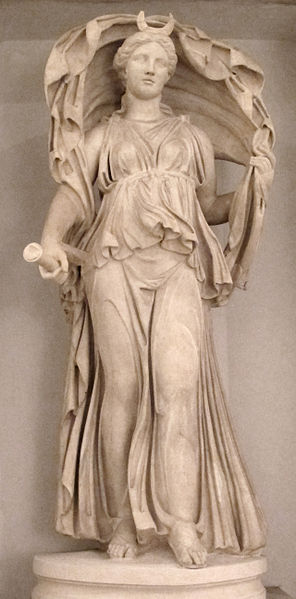The Roman Goddess Diana
Diana is a triple Goddess with many aspects, her connection to the Moon is possibly more important to her identity than her aspect as a huntress. In Latin, her name means “Goddess of Light and of the Moon.” The etymology stems from the words for “shining,” “divine,” “the open sky,” and dies or “daylight.” This may seem contradictive for a Goddess of the Night and the underworld, but as Cicero explains, “she was called Diana because she made it like day during the night”. Diana was not only a Moon Goddess; she was worshipped as the Moon. She was the Moon. Ovid portrays her as such in his Metamorphoses, often using the word “Moon” in place of her name.
As a Roman Goddess of the Moon, Diana was primarily considered a patroness of the hunters, crossroads, animals, and the countryside. Diana absorbed much of the mythology about the Greek Artemis early in Roman history, including a birth on the island of Delos to her parents “Latona” and “Jove”, and her twin brother, Apollo. Yet, the Goddess Diana originally had an independent origin in Italy.
Diana is revered in modern Neo-Pagan religions including Wicca, Roman Neo-Paganism, and Stregheria. In the ancient, medieval, and modern periods, Diana has been considered a triple deity, merged with a Goddess of the Moon (often “Luna”/“Selene”) as well as a Goddess connected to the underworld such as “Hecate”. She is also related to a Moon Goddess, Mene, derived from Proto-Hellenic méns ("month") as in lunar month.

|
|
Diana has likewise been associated in ancient religion and myth, with the Roman Luna, who is identified as the divine embodiment of the Moon.
(Luna is often presented as the female complement of the Sun, the Roman Sol, perceived as a God. Luna is also sometimes represented as an aspect of the Roman Triple Goddess.)
|
Goddesses Dictionary
Aradia home page
